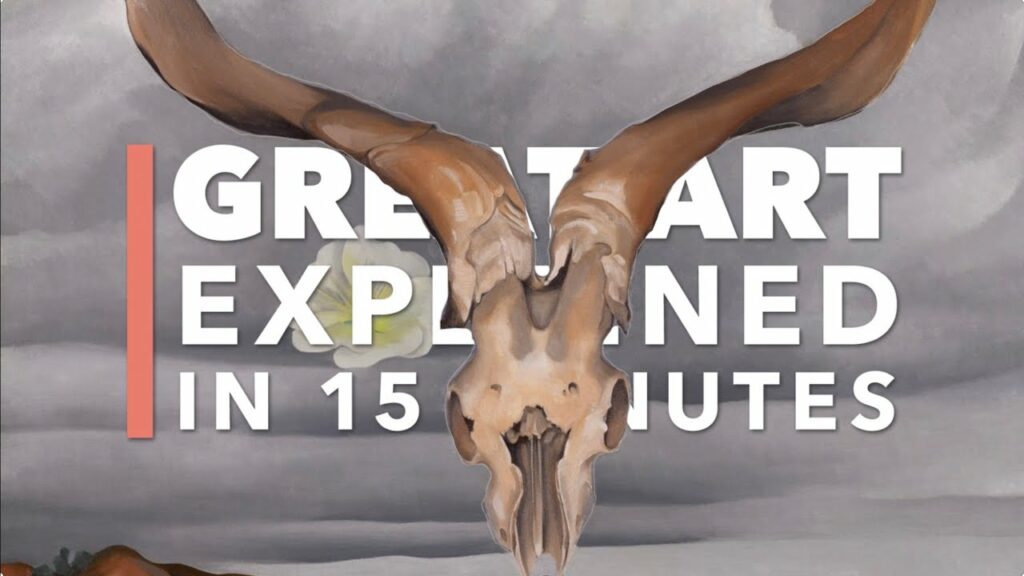Public recognition is an all too rare reward for many artists, but it carries with it a risk of being widely misunderstood.
Georgia O’Keeffe gained renown for her large-scale flower paintings in the 1920s, selling six images of calla lilies for $25,000.
Her husband Alfred Stieglitz, an influential photographer and gallery owner 24 years her senior, created a sensation when he exhibited these floral images alongside his sensuous nude portraits of her, fomenting an erotic association that has been near impossible to shake.
O’Keefe maintained that the close-up flower views were abstractions, similar in spirit to the modernist photographs of her husband’s contemporaries Edward Weston and Paul Strand, but as art historian Randall C. Griffin points out, Stieglitz was inclined to see things differently.
Stieglitz and his circle belonged to a tradition that used themes of sexuality in their art as a declaration of being avant-garde. Stieglitz read virtually all of Freud’s books, as well as Havelock Ellis’s six-volume Studies in the Psychology of Sex, which argues that art is driven by sexual energy. Thus, for Stieglitz, sex was a liberating source of creativity. O’Keeffe may or may not have thought of Freud when she painted her flowers, but the psychologist’s writings were a cultural touchstone at the time, with his ideas widely known in a simplified fashion.
Curator James Payne, creator of the Great Art Explained web series, brings this context to his examination of O’Keeffe’s 1935 painting Ram’s Head, White Hollyhock-Hills.

By the time she began work on it, O’Keeffe had forged a deep, spiritual connection to the New Mexican desert. Its alien landscape offered respite from Stieglitz’s extra-marital affairs and the mental health issues that had plagued her in New York.
The Southwest provided abundant fresh subject matter. She drove her Ford Model A for miles across the desert, stopping to collect the bleached bones of animals who had perished under drought conditions. Unlike Farm Security Agency photographers such as Arthur Rothstein, O’Keeffe was not interested in using these bones to document the catastrophe of the Dust Bowl, or even to meditate on mortality:
The bones do not symbolize death to me. They are shapes that I enjoy. It never occurs to me that they have anything to do with death. They’re very lively. . . .They please me, and I have enjoyed them very much in relation to the sky.


Cow’s Skull with Calico Roses is a lovely still life, a study in white. The same skull shows up transposed (in Cow’s Skull: Red, White, and Blue) against a red, white, and blue background.
“I’ll tell you what went on in my so-called mind when I did my paintings of animal skulls” she told the New Yorker’s Calvin Tomkins in a 1974 interview:
There was a lot of talk in New York then—during the late twenties and early thirties—about the Great American Painting. It was like the Great American Novel. People wanted to ‘do’ the American scene. I had gone back and forth across the country several times by then, and some of the current ideas about the American scene struck me as pretty ridiculous. To them, the American scene was a dilapidated house with a broken-down buckboard out front and a horse that looked like a skeleton. I knew America was very rich, very lush. Well, I started painting my skulls about this time. First, I put a horse’s skull against a blue-cloth background, and then I used a cow’s skull. I had lived in the cattle country—Amarillo was the crossroads of cattle shipping, and you could see the cattle coming in across the range for days at a time. For goodness’ sake, I thought, the people who talk about the American scene don’t know anything about it. So, in a way, that cow’s skull was my joke on the American scene, and it gave me pleasure to make it in red, white, and blue.
Ram’s Head, White Hollyhock-Hills presents a more nuanced vision than Cow’s Skull: Red, White, and Blue, and represents a turning point in O’Keeffe’s art.
As Payne observes, the dark clouds gathered above the red hills visible from her desert ranch promise a much longed-for rain.
The hollyhock she plucked from her garden is a symbol of rebirth and fertility.
Their floating placement has drawn comparisons to Surrealism, but O’Keefe asserted that the composition “just sort of grew together”, telling art historian Katherine Kuh, “I was in the surrealist show when I’d never heard of surrealism. I’m not a joiner.”
Ram’s Head, White Hollyhock-Hills met with acclaim when it was shown at Stieglitz’s Gallery 291 in 1936. The New Yorker hailed it as one of O’Keeffe’s most brilliant paintings in form and execution, and Stieglitz’s friend, painter Marsden Hartley, might well have intuited something about the direction O’Keeffe was heading in when he described the image as “a transfiguration:”
…as if the bone, divested of its physical usages—had suddenly learned of its own esoteric significance, had discovered the meaning of its own integration through the processes of disintegration, ascending to the sphere of its own reality, in the presence of skies that are not troubled, being accustomed to superior spectacles—and of hills that are ready to receive.
Related Content
Explore 1,100 Works of Art by Georgia O’Keeffe: They’re Now Digitized and Free to View Online
The Real Georgia O’Keeffe: The Artist Reveals Herself in Vintage Documentary Clips
Georgia O’Keeffe: A Life in Art, a Short Documentary on the Painter Narrated by Gene Hackman
How Georgia O’Keeffe Became Georgia O’Keeffe: An Animated Video Tells the Story
– Ayun Halliday is the Chief Primatologist of the East Village Inky zine and author, most recently, of Creative, Not Famous: The Small Potato Manifesto and Creative, Not Famous Activity Book. Follow her @AyunHalliday.
